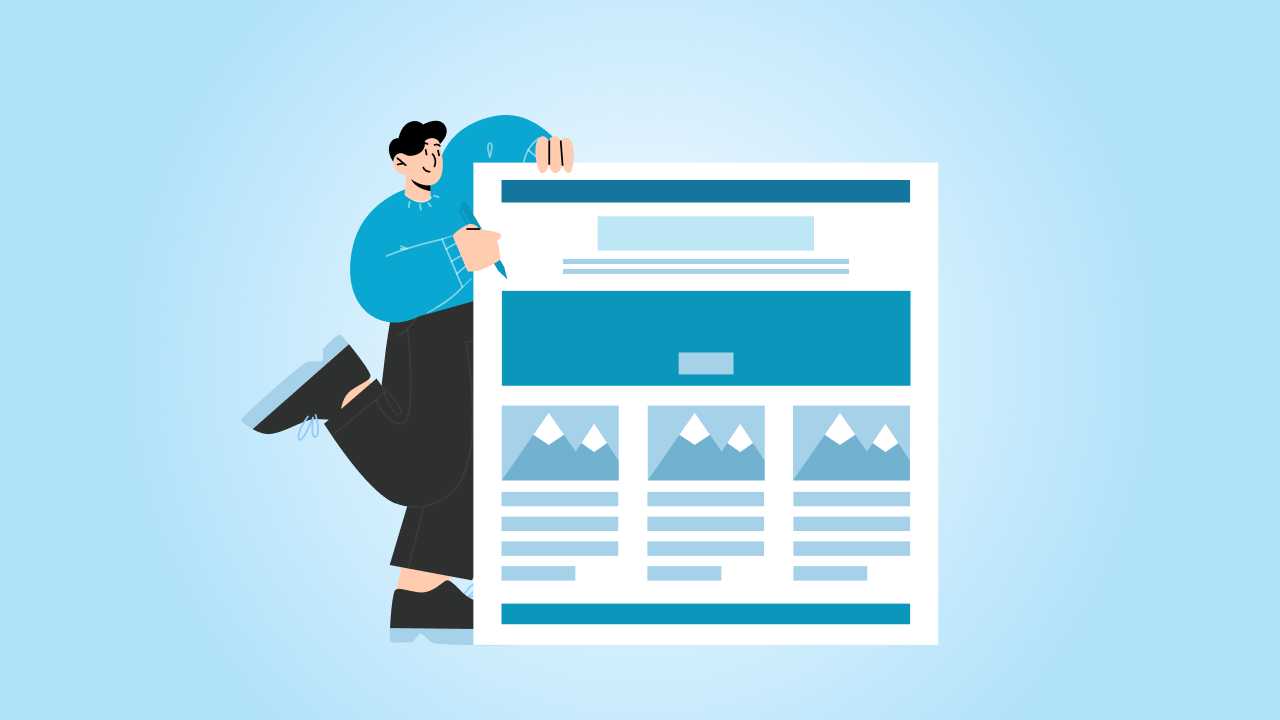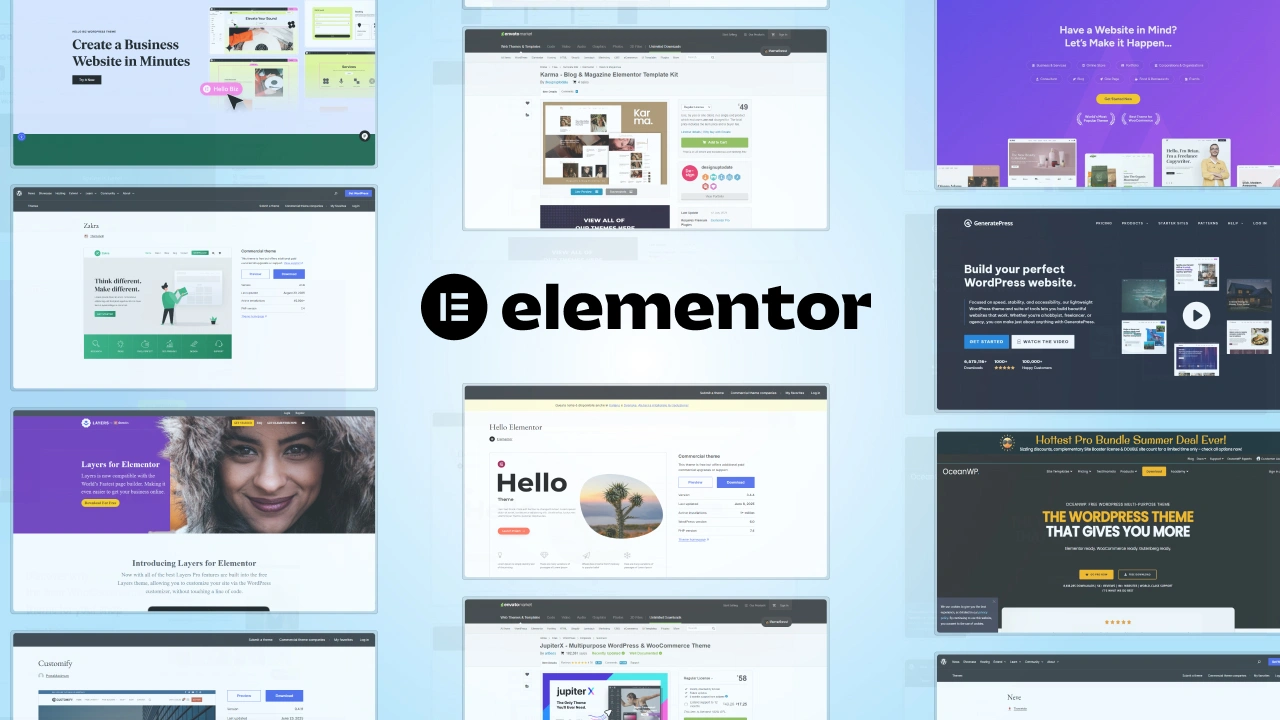Your website is like your business’s front door but online. It’s where people usually come to learn about you, see what you offer, and decide if they want to work with you.
Now, if your website looks old, works slowly, or is hard to use, it might be time for a change.
But what kind of change do you need?
Should you give your current website a refresh with a redesign, or start over completely with a rebuild?
Honestly, both can make a big difference, but choosing the right one depends on what your business needs.
In this post, we will explain what redesigning and rebuilding mean, when you might need each one, and how to figure out the best option for your business.
Don’t worry, we will keep it simple and easy to follow, so you can make a clear and confident decision.
Website Redesign vs. Rebuild: What’s the Difference?
Well, when it comes to improving your website, the terms “redesign” and “rebuild” can sound similar, but in reality, they mean very different things. Let’s break it down so it’s easy to understand.
What is a Website Redesign?
A website redesign means giving your website a fresh look and making some updates to how it works. Think of it like renovating a house—you are keeping the same foundation but improving things like the paint, furniture, and layout to make it look nicer and function better.
Let’s see when you might need a redesign:
- Your website looks outdated.
- Visitors find it hard to navigate or use.
- You need to make small changes to improve performance.
📌Example: Updating your website with a cleaner design, fixing broken links, and making it mobile-friendly.
📖 Also Read:Website Redesign Checklist
What is a Website Rebuild?
A website rebuild means starting from scratch and creating an entirely new website. It’s like tearing down an old house and building a brand-new one. This usually happens when the old website has too many problems or can’t support your business goals any more.
When you might need a rebuild:
- Your website is built on outdated technology that can’t be updated easily.
- You want to add major new features, like an online store or advanced tools.
- The website no longer fits your brand or business needs.
📌Example: Switching from a custom-built website to a modern cms platform like WordPress or creating a new site to handle a growing online store.
Redesign or rebuild? Let the experts at cmsMinds help you make an informed decision.
How to Decide Website Redesign vs. Rebuild (Factors to Consider)
Now that you know the difference between a redesign and a rebuild, the next step is figuring out which one makes sense for your business. The decision isn’t just about budget or time—it’s about understanding what your website truly needs to support your goals and avoid website redesign mistakes. Here are a few key factors to help you decide.
1. Your Business Goals
Ask yourself: What do I want my website to do for my business?
- If you want a modern look, better navigation, or small performance improvements, a redesign might be enough.
- If you are planning to expand your business, add new features, or completely rebrand, a rebuild could be the better choice.
📌Example: If you are a local store planning to sell products online for the first time, you will likely need a rebuild to add e-commerce features.
2. The Condition of Your Current Website
Take an honest look at your website. Is it functional but outdated, or is it riddled with issues like slow loading times, broken pages, or poor mobile performance?
- If your website works but just needs a visual or usability update, go for a redesign.
- If your website is built on old technology that’s hard to update or causing constant problems, a rebuild is probably the way to go.
3. Budget and Resources
Your budget will play a huge role in your decision.
- A redesign is usually less expensive and faster to complete.
- A rebuild may cost more upfront but can save money in the long run by avoiding patchwork fixes and providing a scalable solution.
💡 Pro Tip: Consider your long-term needs. Spending a bit more now on a rebuild might save you from having to redo the entire site again in a couple of years.
4. Time and Urgency
Think about how quickly you need results.
- A redesign is quicker and might be the right choice if you need to see improvements fast.
- A rebuild will take more time but allows you to start fresh with a future-proof website.
📖 Also Read:Website Redesign Timeline
5. User Feedback
If you are unsure, you can ask your users or customers what they think about your website.
- Are they finding it hard to use? That could mean it’s time for a rebuild.
- Do they simply mention the design feels outdated? A redesign might be all you need.
6. SEO and Performance
Consider how changes will affect your website’s visibility and speed.
- A redesign helps you maintain your current SEO while making small improvements.
- A rebuild lets you fix deeper issues like slow load times or poor structure that may hurt your search rankings.
Benefits of Website Redesign vs. Rebuild
Here’s a side-by-side comparison to help you clearly understand the benefits of a website redesign and a website rebuild:
| Factor | Redesign | Rebuild |
|---|---|---|
| Purpose | Refreshes the look and feel of your existing website. | Creates an entirely new website from the ground up. |
| Cost | Generally more affordable, as it focuses on surface-level updates. | Higher initial cost, but a better long-term investment for major changes. |
| Timeframe | Faster to complete, usually a few weeks to a few months. | Takes more time, as it involves building and testing a new site. |
| Technology | Works with your existing platform or system. | Adopts the latest technologies and platforms for better performance. |
| Design and Branding | Updates colors, fonts, layouts, and visuals to modernize the site. | Allows for a complete overhaul of design, structure, and functionality. |
| Functionality Updates | Adds minor improvements like better navigation or optimized layouts. | Enables new features like e-commerce, advanced integrations, or automation. |
| SEO Impact | Preserves existing SEO rankings while making small optimizations. | Provides a clean slate to optimize site structure and improve SEO rankings. |
| Scalability | Suitable for small updates; may still face limitations of the old platform. | Built to grow with your business and handle future needs. |
| User Experience (UX) | Enhances usability with minor changes to navigation or content layout. | Reimagines the entire user journey for a seamless experience. |
| Performance | Improves speed and fixes minor issues like broken links or slow pages. | Resolves deep performance issues and boosts overall site efficiency. |
| Best For | Businesses with a solid website that needs a visual and functional update. | Businesses with outdated, unsupported, or severely limiting websites. |
Questions to Ask Before Choosing Website Redesign or Rebuild
Before you decide whether to redesign or rebuild your website, it’s important to take a step back and think about what your business really needs. Here are some key questions to help you make the best decision:
1. What Are My Business Goals in the Next 3–5 Years?
Your website should align with where your business is headed, not just where it is now.
- If Your Goals Are Short-Term: If you want to increase leads or improve user engagement without making major structural changes, a redesign might be enough.
- If Your Goals Are Long-Term: If you are planning significant growth, launching new services, or expanding into new markets, a rebuild might better support those ambitions.
📌Example: If you plan to add eCommerce in the future, your current site may not be scalable enough, making a rebuild necessary.
2. Can My Current Website Technology Meet These Goals?
Evaluate whether your website’s current platform or technology can handle the changes you want to make.
- Redesign: Works well if your website is built on a solid, up-to-date platform that supports modern tools and updates.
- Rebuild: Necessary if your current technology is outdated, slow, or no longer supported by developers.
📌Example: If your site struggles with mobile responsiveness or lacks integration options, a rebuild could be the smarter option.
3. How Much Downtime Can I Afford?
Consider how much disruption your business can handle during the process.
- Redesign: Usually faster and less disruptive, allowing your site to stay live while updates are implemented.
- Rebuild: This may require more downtime, as it involves creating a completely new website from scratch.
📌Example: If you are in a busy sales period, you might opt for a redesign to make quick improvements without extended downtime.
4. Do I Have the Budget for a Rebuild?
Be realistic about your budget and what you can invest right now.
- Redesign: More affordable and suitable for businesses that need small improvements on a limited budget.
- Rebuild: Requires a larger upfront investment but can save money in the long run by avoiding piecemeal fixes.
📌Example: If your budget is tight, a redesign can still deliver meaningful updates. However, if you have the resources, a rebuild can be a long-term investment in your business’s future.
By asking these questions, you will gain clarity on what your business needs from its website and whether a redesign or rebuild is the right solution.
Actionable Steps to Decide
If you are still unsure whether to redesign or rebuild your website, don’t worry—taking a structured approach can help you make the right decision. Follow these steps to evaluate your website’s needs and choose the best path forward.
1. Conduct a Website Audit
Start by taking a detailed look at your current website to understand its strengths and weaknesses.
- Check Performance: Assess speed, mobile responsiveness, and overall user experience.
- Evaluate Functionality: Identify any outdated features, broken links, or technical limitations.
- Analyze Metrics: Look at bounce rates, conversions, and other key performance indicators (KPIs) to see how well your website is meeting business goals.
💡 Tool Tip: Use tools like Google PageSpeed Insights or SEMrush to analyze your site’s performance.
2. Gather Feedback from Users/Customers
Your website is there to serve your users, so their feedback is invaluable.
- Survey Customers: Ask them about their experience using your website. What do they find confusing or frustrating? What do they like?
- Test with New Users: Observe how first-time visitors navigate your site. This can reveal usability issues you might overlook.
- Analyze Support Queries: Look for common complaints or questions that might point to website problems.
Example Questions to Ask Users:
- Was it easy to find the information you needed?
- Did you encounter any technical problems?
- What would make the website more helpful?
3. Consult with a Web Development Expert
Sometimes, it’s hard to evaluate your website objectively. A professional web development agency or expert can provide a fresh perspective.
- Request an Assessment: Have an expert analyze your website’s performance, design, and technology.
- Get Advice on Costs: Understand the time and budget required for both website redesign services and rebuild options.
- Discuss Future Needs: Share your business goals to see which option aligns better with your long-term plans.
💡 Pro Tip: Reach out to website design agencies or freelancers with experience in your industry for targeted advice.
4. Compare Redesign and Rebuild Options with a Cost-Benefit Analysis
Finally, weigh the pros and cons of each approach based on what you’ve learned.
- Calculate Costs: Factor in not just the upfront expense but also maintenance, upgrades, and potential downtime.
- Estimate Benefits: Think about how each option will impact user experience, conversions, and business growth.
- Consider Scalability: Will the chosen solution still work for you in a few years, or will you need to reinvest?
Conclusion
Initially, deciding between a website redesign and a rebuild can feel like a big decision, but it all comes down to what your business needs. A redesign is perfect for giving your site a fresh look, fixing usability issues, and making minor updates. On the other hand, a rebuild is ideal when your current site can no longer meet your goals or keep up with modern technology.
Both approaches have their unique benefits:
- Redesigns are quicker, cost-effective, and maintain your current foundation while improving the user experience.
- Rebuilds offer a long-term solution, with the flexibility to address deeper problems and support future growth.
Again, the right choice depends on your business goals, budget, and website’s current state. By understanding these factors and taking actionable steps—like conducting a website audit or consulting with experts—you will be better prepared to make an informed decision.
Our team specializes in helping businesses determine whether a redesign or rebuild is the best fit for their goals.





